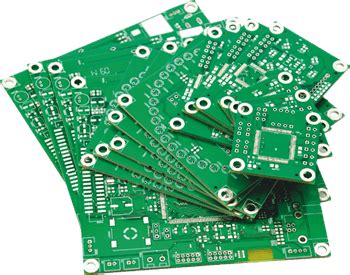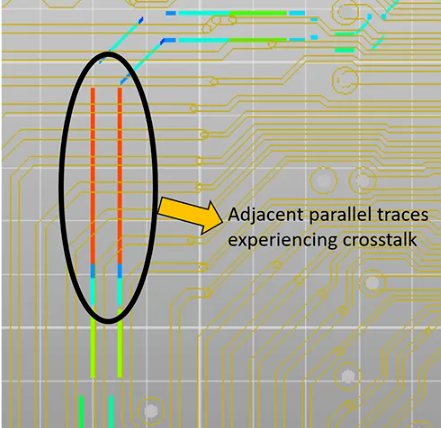How to maintain low impedance of integrated circuits (ICs) through power decoupling
In electronic system design, power decoupling is a crucial link, especially for integrated circuits (ICs). Maintaining low impedance of power entering IC is crucial to ensuring system stability and performance. This article will start from the basic concept of power decoupling and deeply explore how to maintain low impedance of power entering IC through effective decoupling measures, thereby improving the overall performance of the system.
1.Basic concept of power decoupling
Power decoupling, in short, refers to the use of specific circuits or components to eliminate or reduce voltage fluctuations on the power line caused by load changes, noise interference, etc. In IC design, due to the rapid switching action of the internal circuit of the IC, transient currents will be generated. These transient currents will cause voltage drops on the power line, causing the power supply voltage of the IC to fluctuate, thereby affecting the performance of the IC. Therefore, maintaining low impedance of power entering IC through power decoupling is an important means to ensure the normal operation of IC.

2.The importance of power decoupling
Reducing power supply noise: Power supply noise is one of the important factors affecting IC performance. Through decoupling, the noise on the power line can be effectively suppressed, the signal-to-noise ratio of the IC can be improved, and the overall performance of the system can be improved.
Improve power supply stability: Stable power supply voltage is the basis for normal operation of IC. Through decoupling, the fluctuation of power supply voltage can be reduced, the stability of power supply can be improved, and the IC can maintain optimal performance under various working conditions.
Protect IC from damage: Excessive power supply voltage fluctuation may cause damage to IC. Through decoupling, the fluctuation range of power supply voltage can be limited, protecting IC from damage and extending its service life.

3.Power supply decoupling method
Use decoupling capacitor
Decoupling capacitor is one of the most commonly used components in power supply decoupling. By connecting one or more capacitors in parallel near the power pin of IC, a low-impedance local power supply network can be formed to provide a stable power supply voltage for IC. The selection of decoupling capacitor needs to be determined according to factors such as the operating frequency, load characteristics and power supply voltage fluctuation range of IC.
Low-frequency decoupling: For low-frequency applications, electrolytic capacitors are usually selected as decoupling capacitors. Electrolytic capacitors have large capacity and can effectively suppress low-frequency noise and power supply fluctuations. However, the equivalent series inductance (ESL) and equivalent series resistance (ESR) of electrolytic capacitors are large, and the performance is poor at high frequencies.
High-frequency decoupling: For high-frequency applications, ceramic capacitors with low ESL and ESR need to be selected as decoupling capacitors. Ceramic capacitors have relatively small capacity, but excellent high-frequency performance, and can effectively suppress high-frequency noise and power supply fluctuations. In practical applications, electrolytic capacitors and ceramic capacitors are usually used in combination to take into account the decoupling effect of low and high frequencies.
Optimize PCB layout and wiring
PCB layout and wiring have an important impact on the power supply decoupling effect. In order to reduce power supply noise and voltage fluctuations, the following measures need to be taken:
Shorten the power supply trace: Try to shorten the trace length between the IC power pin and the decoupling capacitor to reduce the impact of the trace inductance on power supply fluctuations.
Thicken the power supply trace: Appropriately increase the width of the power supply trace to reduce the trace resistance and inductance, and improve the stability of the power supply network.
Reasonably layout the decoupling capacitor: Place the decoupling capacitor close to the IC power pin, and ensure that the connection between the decoupling capacitor and the ground layer is as short and direct as possible.
Use multi-layer PCB: Multi-layer PCB can provide more power layers and ground layers, which is conducive to reducing the impedance and noise of the power supply network.
Using ferrite beads
Ferrite beads are a high-frequency filter component that can provide high impedance at high frequencies, thereby suppressing the propagation of high-frequency noise. In power supply decoupling, ferrite beads can be used to enhance the isolation and decoupling effect of high-frequency noise. However, it should be noted that ferrite beads behave as inductive components at low frequencies, which may have an adverse effect on low-frequency signals. Therefore, when using ferrite beads, it is necessary to select and adjust them according to the actual situation.
4.Practical application cases of power supply decoupling
Take amplifiers as an example. Amplifiers are very sensitive to changes in power supply voltage, and even slight fluctuations in power supply voltage may cause distortion of the output signal. Therefore, power supply decoupling is particularly important in amplifier design. By reasonably selecting decoupling capacitors, optimizing PCB layout and wiring, and using ferrite beads, the power supply noise and voltage fluctuations of the amplifier can be effectively reduced, and the stability and purity of its output signal can be improved.
In addition, in digital IC design, such as FPGAs and other complex ICs with multiple power supply voltages, power supply decoupling is also crucial. Since digital ICs contain a large number of logic gates and registers, the transient currents generated by their switching actions are more complex. Therefore, a more sophisticated power decoupling solution is needed to ensure the stability of each power supply voltage. This usually includes configuring independent decoupling capacitors for each power supply voltage pin, optimizing PCB layout to reduce power trace inductance, and using high-frequency filter components such as ferrite beads.
5. Conclusion
Power decoupling is an important means to maintain low impedance of integrated circuits (ICs) and improve system stability and performance. By reasonably selecting decoupling capacitors, optimizing PCB layout and wiring, and using ferrite beads, the impact of power supply noise and voltage fluctuations on IC performance can be effectively reduced. In practical applications, it is necessary to formulate a specific power decoupling solution based on factors such as IC operating characteristics, load conditions, and power supply requirements to ensure the normal operation and optimal performance of the system. With the continuous development of electronic technology, power decoupling technology will continue to innovate and improve, providing more possibilities for the design and application of electronic systems.






